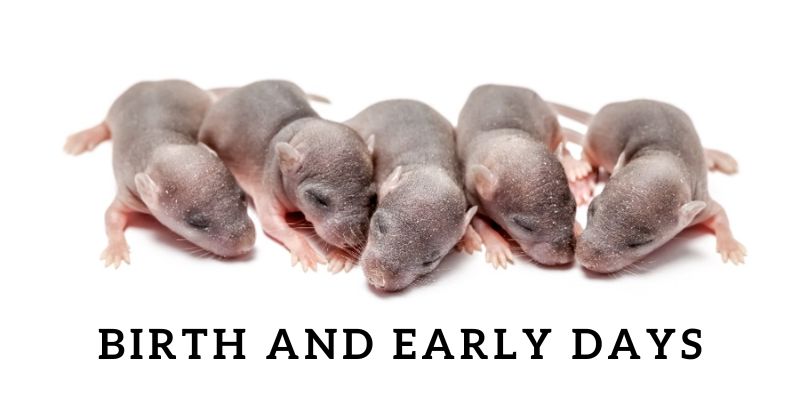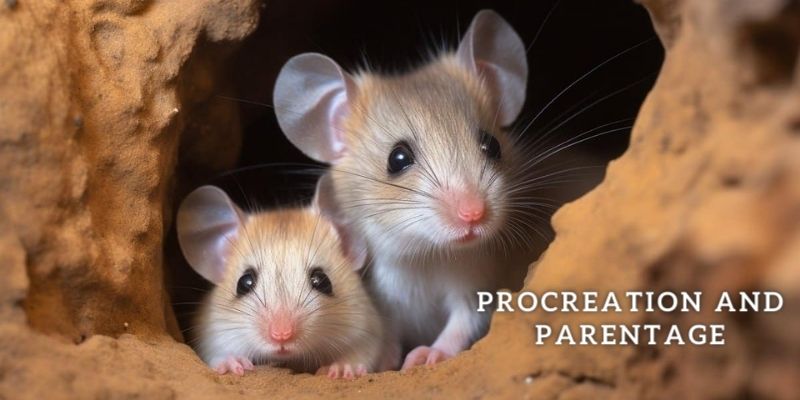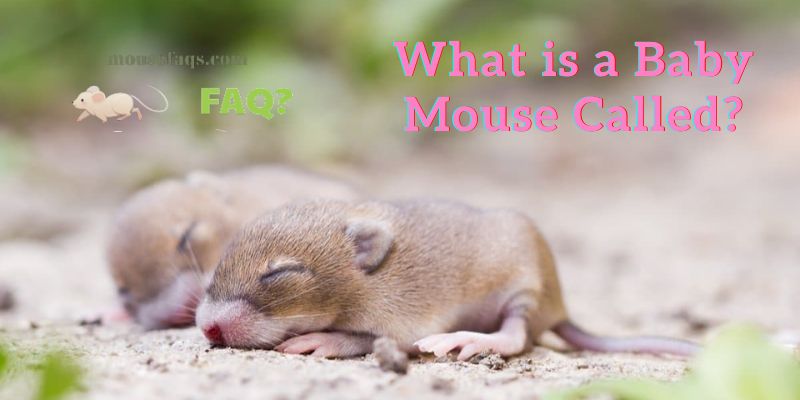Mus musculus, commonly known as the house mouse, embarks on a life journey fraught with developmental intricacies, each phase underscored by its distinctive morphology and behavioral adaptations. Among the myriad inquiries concerning these diminutive creatures, the recurrent query persists: “What is a baby mouse called?” In this exhaustive exposition, Mousefaqs shall traverse the expanse of the house mouse’s lifecycle, scrutinizing its metamorphosis from birth to maturity while elucidating the recurring inquiry, “What is a baby mouse called?”
What is a Baby Mouse Called? Birth and Early Days
At birth, baby mice emerge hairless and blind, resembling small pink worms more than the furry creatures they will become. This stage of development lasts for about the first week of their lives. During this time, the mother mouse diligently tends to her offspring, nursing them and keeping them warm. It’s during this initial phase that one might wonder, “What is a baby mouse called?” The answer: A baby mouse is called a “pinkie” at birth.

Parturition and Neonatal Nascency
At parturition, the progeny of the house mouse emerge as diminutive, ectothermic entities, devoid of fur and sight, evoking a semblance akin to neonatal albinic larvae. This nascent stage endures for the initial septenary period of their existence. During this epoch, the maternal murine diligently tends to her progeny, administering nourishment and fostering thermogenesis. In this embryonic epoch, one might muse, “What is a baby mouse called?” The rejoinder reverberates: A neonatal house mouse is denoted as a “pinkie.”
Transition to Pupation:
As the streams of time meander, young mice embark on a transformative journey. Their once-pale fur evolves into a dense coat, while their eyes, once tightly shut, gradually open to the world, granting them a glimpse of their surroundings. This period of transition, often occurring towards the end of the first week or the beginning of the next, marks the shift from newborn to juvenile. So, to echo the question: What is the term for a baby mouse during this phase? It is known as a “pup.”
Exploration and Maturation:
With the unfolding of time, the pups evince burgeoning curiosity and intrepidity. They embark on forays within their habitat, engaging in inter-sibling interactions. Concurrently, their corporeal dimensions expand, their pelage attains densification, and their locomotion becomes more coordinated. Throughout this phase of ontogeny, the pups remain reliant on maternal providence yet evince nascent autonomy. What is a baby mouse called during this gestational epoch? It perseveres as a “pup.”
Weaning and Independence:
Around three weeks of age, the pups are weaned from their mother’s milk and begin to eat solid food. This marks a significant milestone in their development as they become less reliant on their mother for nourishment. The young mice become more independent, venturing further from the nest in search of food and exploration. Despite this newfound independence, they still huddle together with their siblings for warmth and security. So, to revisit the question, what is a baby mouse called during this stage of independence? It’s still referred to as a “pup.”

Adolescence and Sexual Maturity:
As the temporal axis unfolds, the pups undergo an exponential crescendo in growth and maturation. Their corporeal form attains elongation, and they attain sexual maturity at approximately the quinary to senary hebdomad. At this conjuncture, sexual dimorphism becomes patent, necessitating the segregation of males and females to preclude unwelcome gravidity within the cohort. The juvenile murine assume autonomous stances, establishing territorial demarcations and hierarchies within their communal habitation. What is a baby mouse called as it transitions into adulthood? It transcends the epithet of infant, meriting simply the appellation of “mouse.”
Procreation and Parentage:
Upon attaining the zenith of maturity, house mice acquire reproductive competence, perpetuating the continuum of life. The female murine, denominated does, evince a proclivity for parturition, effectuating multiple parturitions throughout the chronological annum, each parturition yielding a litter replete with progeny. The gestational duration for murine is ephemeral, typically enduring approximately tres septimana. The male counterparts, or bucks, assume a pivotal role in the propagation process, participating in mating rituals and safeguarding their dominions against rival contenders. Parentage begets novel challenges and obligations for the adult murine as they nurture and safeguard their progeny, ensconcing the continuum of existence.

Conclusion:
In summation, the lifecycle of Mus musculus is a paradigmatic odyssey, imbued with salient stages of metamorphosis. From the parturition of altricial pinkies to the self-sufficient maturation of adult mice, each phase delineates a veritable triumph in their struggle for subsistence and perpetuation. Amidst this didactic chronicle, the interrogative refrain, “What is a baby mouse called?” serves as a poignant reminder of the labyrinthine tapestry of life and the enigmatic enigmas of the natural cosmos. Ergo, whether designated pinkie, pup, or adult mouse, each phase imparts its own nuanced significance within the lifecycle of these mesmerizing murine.
Related Posts:
- Mouse Pad Feet Stories: How They Impact Your Gaming and Work…
- House of Mouse DVD: Why You Need This Classic Collection
- How Can Evolution Be Observed In Mouse Populations?
- Best Mouse Pad for Mac Mouse: A Comprehensive Guide for…
- Cherry Mouse Street Comics: A Colorful and Entertaining…
- Minnie Mouse 50th Anniversary: Celebrating a Pop Culture…


